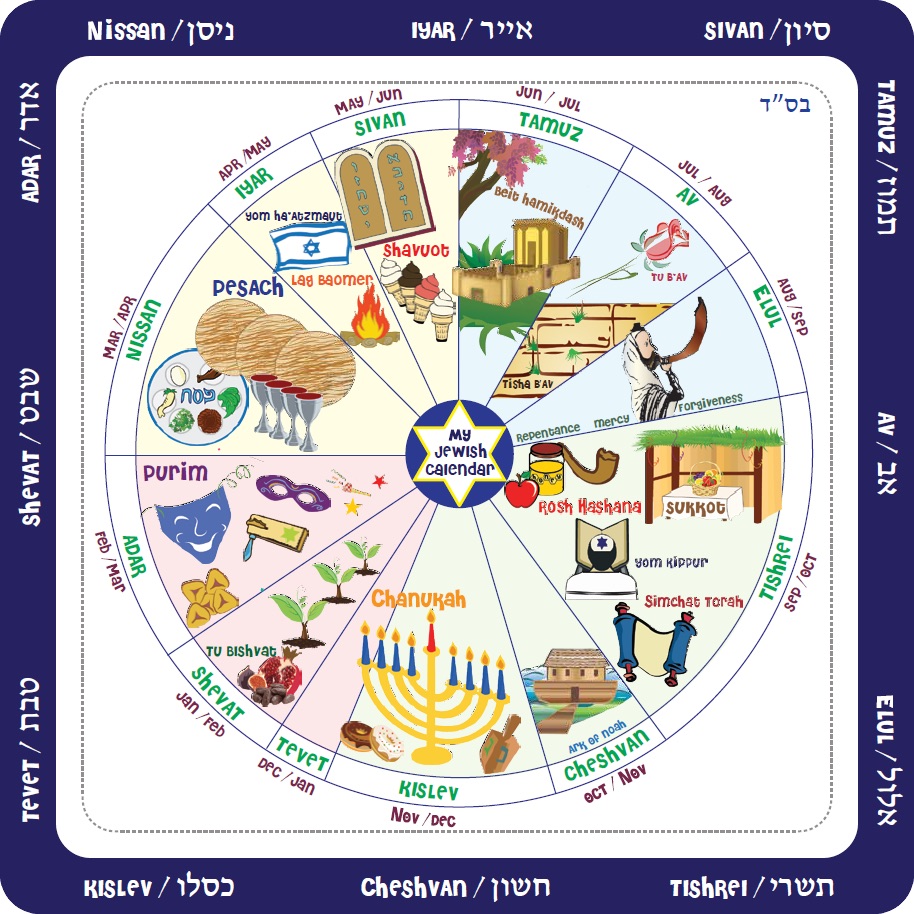According to tradition, the Jewish Calendar began with year one at the time of the Creation, 3761 B.C.E. (Before the Common Era). This number is added to the current year of 2021/2022, thereby making this Jewish Year 5782.
Jews follow the Jewish or Hebrew Calendar for religious observances. These include all the Jewish Festivals as well as the cycle of Torah readings (see The Torah) and Yarzheit (Memorial) dates. (See Life Cycle Events).
The festivals are set within this which is why they ‘move’ according to the Gregorian one. There can be up to 2 weeks difference from year to year, for example, Rosh Hashanah (Jewish New Year) is on the first day of the month of Tishri which may be in September or October.
The calendar follows the cycles of the moon and the sun which is why it is known as a Lunisolar Calendar. The start of each new month is based on the appearance of the ‘new moon’. This happens on average every 29.5 days therefore the Jewish year is made up of 12 months which alternate between 29 and 30 days long. Another ‘leap’ month is occasionally added to synchronise with the solar year of 365 days.
The Months and Their Festivals
TISHRI – Rosh Hashanah, Yom Kippur, Sukkot, Simchat Torah
CHESHVAN
KISLEV – Chanucah
TEVET
SHEVAT – Tu B’Shevat
ADAR (Also ADAR II when a leap month occurs) – Purim
NISSAN – Passover
IYAR
SIVAN – Shavuot
TAMUZ
AV
ELUL
The Days of the Week
The new week starts at Havdalah – the conclusion of Shabbat. (See Shabbat) but the first day is counted as Sunday. In Hebrew the names of the days of the week are numerical ie:
Sunday – Yom Rishon (First Day) Monday – Yom Sheni (Second Day), Tuesday – Yom S’lishi (Third Day), Wednesday – Yom Revi’i (Forth Day), Thursday – Yom Chamishi (Fifth Day), Friday – Yom Shishi (Sixth Day), Saturday – Shabbat.
